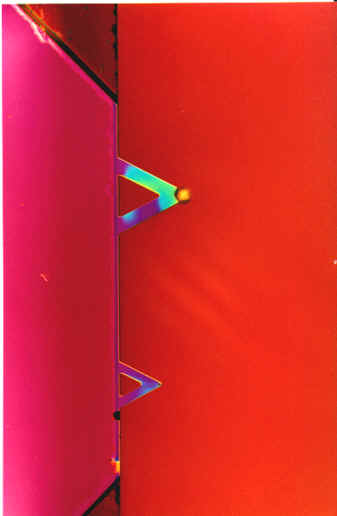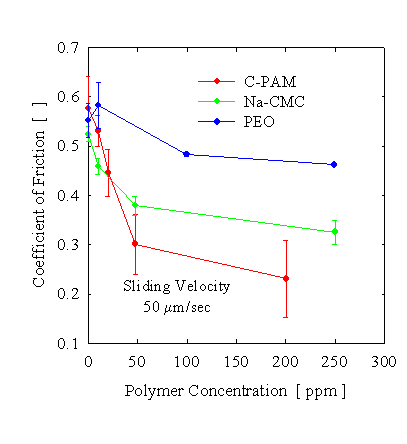We have found that water-soluble polymers alter the structure and rheology of fiber suspensions. To investigate the mechanisms by which the polymers alter suspension behavior, we employed colloidal probe microscopy to examine the effect of water-soluble polymers on a model fiber contact.
A cellulose sphere was attached to an atomic force microscope (AFM) cantilever, as illustrated in Figure 1. AFM experiments were then
conducted to measure the forces between the cellulose sphere and a planar
cellulose film. These experiments were conducted in water, with various
concentrations of added electrolyte and water-soluble polymer.
(AFM) cantilever, as illustrated in Figure 1. AFM experiments were then
conducted to measure the forces between the cellulose sphere and a planar
cellulose film. These experiments were conducted in water, with various
concentrations of added electrolyte and water-soluble polymer.
The normal force is plotted as a function of surface separation for various electrolyte concentrations and no added polymer in Figure 2 below. These data show that the interaction between pure cellulose surfaces is repulsive, and follows the expected trends for screened electrostatic repulsion between charged surfaces.
Adding water soluble polymers, such as sodium carboxymethylcellulose (Na-CMC), cationic poly(acrylimide) (C-PAM), or poly(ethylene oxide) (PEO), retains the repulsive nature of the interaction between the surfaces, at least above a minimal concentration level. The separation at which the repulsive forces are detected increases to larger values.
We also measured the lateral forces between the surfaces when the planar surface is set in motion in a direction within the plane of the surface. The forces thus measured are largely independent of the sliding velocity. The lateral force measure was found to be proportional to the normal load, thus obeying Amonton's law of sliding friction, F = m N, where F is the lateral force, N is the normal load, and m is the coefficient of sliding friction.
The coefficient of sliding friction decreased with increasing polymer concentration. These results are summarized in Figure 3 below, where the coefficient of friction is plotted as a function of polymer concentration for three different polymers.
These results suggest that water-soluble polymers may alter the structure and rheology of fiber suspensions by altering the frictional interactions between fibers. Support for this hypothesis has been obtained from our simulation studies of flowing fiber suspensions.

